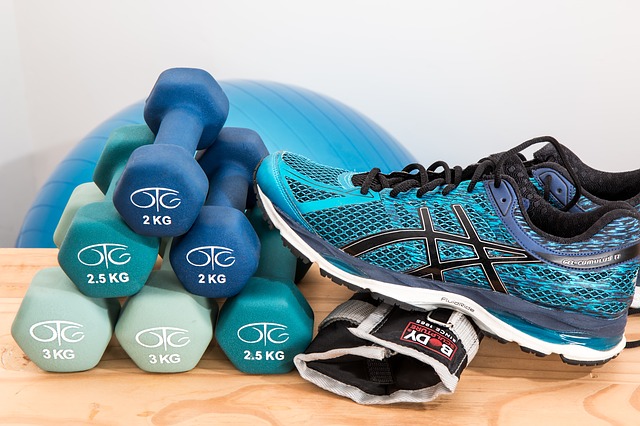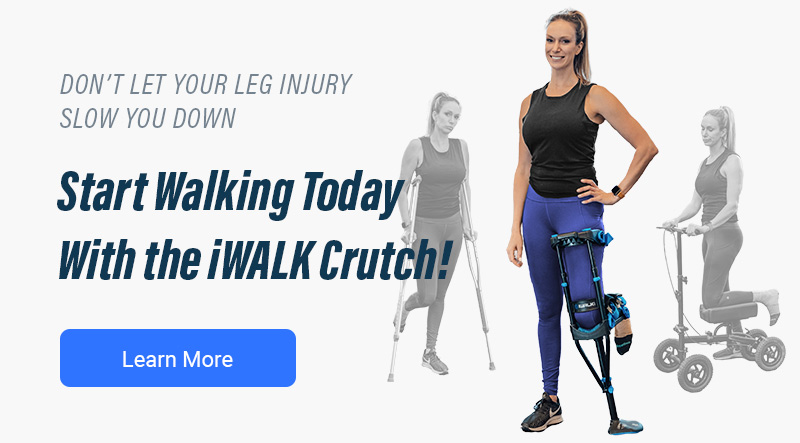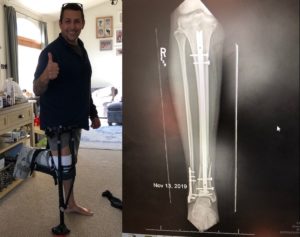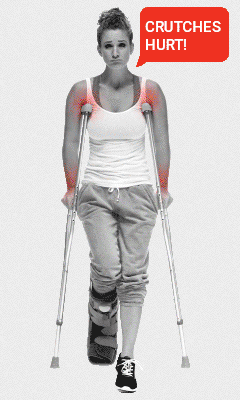If You’re Wondering How to Exercise When You’re Injured, We’ve Compiled Some Basic Exercises for Different Injuries That Can Help You Stay Sufficiently Fit While You Recover
Injuries can feel like a major setback when you’re trying to improve or maintain your level of physical fitness. Getting to and from the gym, taking walks, and even simple tasks feel like a chore.
When you’re recovering from an injury, it’s important to give your body adequate time to heal, but it’s also important to maintain fitness. If you’re wondering how to exercise when you’re injured, we’ve compiled some basic exercises for different injuries that can help you stay sufficiently fit while you recover.
Maintain Your Fitness
When you stop exercising, your body goes through the process of deconditioning. This simply means that when you stop working out, your body gradually becomes weaker and your aerobic fitness declines. While short periods of rest, like taking a short vacation or enjoying a break on the weekend, won’t drastically reduce your fitness gains, long-term inactivity, such as recovering from an injury, will.
The amount of deconditioning your body experiences during an injury depends largely on how fit and active you were before the injury and how long your injury recovery takes. The more fit you are, the less deconditioning your body will experience. However, there are ways to decrease the amount of deconditioning your body goes through and even doing some exercise with the assistance of a mobility device will help you maintain your strength and much of your aerobic ability while you recover.
Different Exercises for Different Injuries
You’ve worked hard to get fit, so don’t let an injury set you back from your health goals, and absolutely don’t hinder your recovery by doing exercises that can injure your body further. The type of exercise you can and should do depends on what kind of injury you have. Follow the advice of your doctor and learn how to exercise when injured with a safe approach to maintaining your fitness. A hands-free mobility device like the iWALK crutch can help you stay active during recovery for many injuries.
Exercises for Hand and Wrist Injuries
Injuries to hands and wrists are very common—especially injuries caused by repetitive motions. Carpal tunnel is a common injury caused by repetitive motions such as typing, writing, golfing, or sewing. According to the National Institute of Neurological Disorders and Stroke, women are three times more likely to experience symptoms of carpal tunnel than men because they usually have smaller wrists and a smaller carpal tunnel.
Exercises To Do When Injured
The good news is that lower body exercises and most cardio exercises are usually safe to do with a hand or wrist injury. If you have an injury such as carpal tunnel that allows you to place some pressure on your wrists, make sure you do exercises that keep your wrists straight.
Exercises To Avoid When Injured
If you have a serious injury to your wrist such as a broken bone, it’s best to avoid all forms of exercise that involve your hands and wrists until you are fully healed. When you’re learning how to exercise when injured, you should consult with your doctor on what exercises are best. Avoid exercises that cause additional pain or discomfort to your wrists.
Exercises for Back Injuries
Back injuries are very common and can be excruciating and debilitating. Back injuries often take a long time to recover from and can be the result of a myriad of underlying issues such as arthritis, disc disease, muscle strains, or soft tissue injuries. Always check with your doctor on what exercises are appropriate if you have a back injury so you can avoid further injury to the area.
Most back pain exercises are targeted towards individuals with lower back pain as a result of daily stressors and muscle tension. One of the best ways for how to exercise when injured and reduce lower back pain is to get moving and improve blood flow to the affected area. Here are some exercise suggestions for individuals suffering from lower back pain.
Exercises To Do When Injured
Walking is a low-impact exercise that helps circulation in your body and can relieve lower back pain. Swimming and recumbent bikes are other great, low-impact ways to get exercise while you have a back injury. Other exercises you might try include gentle abdominal exercises, yoga, pilates, chest presses, lat pulldowns, wall sits, leg extensions, seated cable rows, and overhead presses.
Exercises To Avoid When Injured
Exercises that engage your back or are high-impact are best to avoid if you have back pain or a back injury. This includes exercises such as running, overhead lifting, and leg presses. As with any injury, you need to make sure you pay especially close attention to how your body feels while you exercise. Don’t do any exercises that aggravate your pain. Basically, if you feel pain—just don’t do it. It’s better to be safe than to risk injuring yourself further.
Exercises for Knee and Leg Injuries
Lower body injuries to knees and legs can make it difficult to get the exercise you need. Most cardio and endurance exercises use your lower body, limiting you to upper body exercises. Lower leg injuries can make it difficult just to get to the gym—let alone exercise. Using a hands-free crutch like the iWALK crutch can help you get to the gym and move as you recover.
Common lower leg injuries include broken bones, sprains, and shin splints. Learning how to exercise when injured and the type of exercise you can do depends on the type and severity of your knee or leg injury.
Exercises To Do When Injured
While you might feel limited in the number of exercises you can do with a knee or leg injury, there are still a lot of fun and engaging upper body and core workouts that you can do. Try kayaking, using the hand cycle, swimming with your upper body, upper body weights, and core and ab exercises. If you have shin splints using the elliptical or biking can help reduce impact-related injuries while still giving you a great workout. A hands-free crutch such as the iWALK crutch can also make it possible to do some light walking while you’re recovering from your leg injury.
Exercises To Avoid When Injured
When you have a knee or leg injury, you should avoid any exercise that puts stress on your lower body including running, biking, or weights. If you have shin splints you don’t have to completely forego lower body workouts, but you should take the intensity and impact down a notch and focus on low-impact workouts until you recover.
Exercises for Elbow and Shoulder Injuries
Shoulder and elbow injuries most commonly occur because of pinched tendons and impingement. Impingement is another overuse injury; it’s common among swimmers and is often referred to as “swimmer’s shoulder.” Impingement occurs when your rotator cuff catches on the top of your shoulder. It’s a painful condition and requires sufficient rest and often physical therapy to treat. Thankfully, shoulder and elbow pain allows for a lot of traditional exercises to continue because you still have full use of your lower body.
Exercises To Do When Injured
Lower body weights and cardio are great for individuals with elbow and shoulder injuries. This includes walking, running, stair climbing, ellipticals, leg presses, lunges, wall sits, and more. As long as you avoid using the injured elbow or shoulder, you can still get in a great workout without compromising your injury.
Exercises To Avoid When Injured
If you have an overuse exercise like swimmer’s shoulder or tennis elbow, you’ll want to avoid doing those activities until your body has healed. Other exercises to avoid include any overhead exercises, overhead-free weights or lifts, and any other repetitive shoulder or elbow movements.
Maintain Physical and Emotional Health
Sometimes the greatest benefit to exercising when you’re injured is your mental health. Getting up and being active improves blood flow and circulation and helps you recover, but it also helps you stay positive while you recover. Maintaining your mobility with an iWALK hands-free crutch and learning how to exercise when injured can help you maintain your emotional and physical health while you take the time you need to fully recover.
You Might Also Like:
7 Exercises to Help You Stay in Shape While on Crutches
If you’re itching to start moving again, we have some great news: you can exercise while on crutches.
iWALK Hands-Free Crutch – A Physical Therapist’s Experience
Physical Therapist Eric J Nelson reviews the mobility options available to patients with lower leg injuries, including crutches, knee scooters, and the iWALK hands-free crutch.











